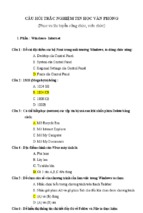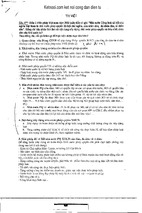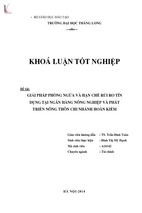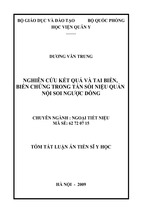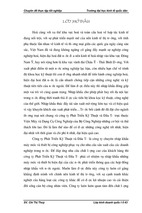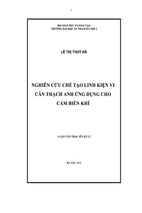Three Teachings
Talks by Ven. Tenzin Palmo
BO
S
B
e
DHANET
'
UD
O K LIB R A R
Y
E-mail:
[email protected]
Web site: www.buddhanet.net
Buddha Dharma Education Association Inc.
Content
Introduction
3
The First Teaching
— Retreat
5
Questions & Answers 23
The Second Teaching
— Mahamudra Practice
38
The Third Teaching
— Mindfulness
76
Questions & Answers 80
2
Introduction
These three talks were delivered in Singapore during
May 1999 at various Dharma centres. The audiences
were mainly comprised of Chinese middle class professionals who, within their highly pressured and
stressful lives, are searching — in ever increasing numbers — for a viable means to counteract the relentless
strain of the daily round and bring some peace and
clarity into their lives. They are reaching out to find a
spiritual dimension to their otherwise empty, though
materially prosperous, existence.
When I face an audience my main intention is how
to say something that will be of use and benefit. Not
just words that will be intellectually challenging or
emotionally satisfying, but instruction that can be used
and that will encourage people to try to help themselves — and others. The audience is usually not made
up mainly of monks, nuns and hermits as it would
have been in the past! It is an audience of ordinary
people with families, professions and normal social
obligations. Therefore it is appropriate to talk as though
they are people who have outwardly renounced the
world and have nothing to do all day but formal
Dharma practice.
3
The fact is that these often sincere and dedicated
Dharma followers who have very little time for formal
practice. So I try to find words that will be of help
and encouragement to people in this situation because
otherwise the Dharma would have no meaning for
them. In the past in some traditions there tends to have
been an over-emphasis on sitting meditation as the
sole means to enlightenment and daily life with family
and work has been seen as an obstacle to practice. To
redress this imbalance, it needs to be pointed out that
our everyday lives — when lived with awareness and
open-heartedness — are the very basis of our Dharma
practice. Our relationships and the daily round are the
means by which we cultivate the qualities needed on
the path.
So these talks are not sophisticated expositions of
Buddhist philosophy nor detailed instruction on meditation practice. They are simply words of encouragement to remind ordinary people that we all have the
potential for inner transformation and we can all do it
if we would only try.
Tenzin Palmo
4
The First Teaching
Retreat
Basically, there are two essential qualities that we
require in Buddhist practice. The first is that we be
able to withdraw from society for a time, be it a few
hours, a few days, a few months or a few years. The
other requirement is being able to take whatever we
have gained from our experience of isolation and bring
it back to the world — to our relationships and into our
everyday life. Like breathing in and breathing out, we
need both.
Sometimes people are very impressed by hearing
about the merit of retreats — three years, seven years,
life-long retreats — and we have the idea that maybe
if we could do that too, then we could really get somewhere. But we are ordinary people. We can’t do that, so
we feel that there is not much hope that our practice
will become very profound.
But actually, it is not so much the quantity as the
quality that counts. Anyone can sit in a three-year
retreat with a distracted mind and not gain very much
from it. Or anyone can sit for a three day retreat, very
focused on what one is doing in the practice, and even
in three days can experience some transformation. So
I think it’s not a matter of the length of time, or how
5
many mantras you do, how many prostrations you do,
how many this, how many that. It is not a spiritual
bank account that we are trying to accumulate. The
important question we always have to ask is — fundamentally, has there been any change?
The great pandita of the 11th century said that the
critical issue of judging any kind of retreat practice is
whether at the end of it our negative emotions — our
anger, our greed, the basic delusions of our mind — has
been lessened or not. Even if we have been in retreat
for 12 years, nothing has been attained if we still have
the same internal problems, the same anger, the same
clinging to things, the same attachment and greed, the
same basic delusion of the mind.
It doesn’t matter how many millions of mantras
we have done, how many inner tantras we have accomplished. This is very important. All these practices are
nothing if they do not transform the mind. If the mind
is the same as the one we went in with, we have not
progressed. Even worse, perhaps we are very proud
because we feel we are great practitioners now. We are
very pleased with ourselves, and we say, “I have done
that retreat and I’m expert in this practice”. In fact, that
is adding defilements on top of the ones which we
have not managed to remove. We now have new ones!
Please understand that this is very, very important. Any practice that we do is for aiding the mind,
transforming the mind so that we can genuinely help
6
others. If this doesn’t happen, and we just become kind
of smart and satisfied that we are such good Dharma
practitioners because we do three hours of meditation
every day, always do our practice and let everyone
know how often we do our practice and how early we
get up — then what is the use? Do you understand?
Ego
The whole of our Dharma practice is to reduce our
Ego, not to increase it. We have to be careful of this. It
is not good to become a professional Dharma person,
making sure that everybody sees we are very spiritual,
we are such good vegetarians, we never smoke, we
don’t go to karaoke bars, we are not like those worldly
people. We are professional spiritual people. We are
very pleased with ourselves.
Of course the Ego loves this. Ego really pets itself.
“Look at me, I’m such a superior person to these
deluded people around me, I’m so much more disciplined, I’m so much more controlled.”
So we have to watch. We have to be careful that
in the Dharma practice our intention is quite pure.
Because our delusion and our tricky Ego can end up
actually reinforcing the very problems which we are
trying to eradicate. It just becomes another way for the
Ego to sit back and feel very good. This is going to
7
happen with people who do retreats; they will have a
sense of self-satisfaction that they have done this kind
of practice.
The Benefit of Retreats
Having said that, it is very good to take time out from
our everyday lives, spend the whole day and what we
can of the night totally concentrated on our spiritual
practice and not be distracted during this time by our
ordinary daily concerns. There is no doubt this can be
extremely beneficial.
There is the question then of whether it is more
beneficial to go into group retreat or solitary retreat.
I personally would suggest that we start with group
retreats. In a group retreat you have the support of everyone else around you. Also, because everybody is sitting in a group, you can’t start dithering around or suddenly think, “Oh, this is useless,” and go make a cup
of tea. You have to sit, however you are feeling. Even
if you wake up in the morning with a headache, you
still have to sit. You can think of thousands of things
you have to do, but you still have to sit. It reinforces the
discipline.
Perhaps if one has never done a retreat before and
one starts on ones own, it’s very easy for it to start
off quite strong and than get weaker and weaker and
8
in the end it doesn’t exist any more. In a group that
doesn’t happen. Also, in a group there is usually a
group leader or a teacher and that is also very helpful,
because the teacher will co-ordinate everyone’s effort
in the same direction and give instructions and advice.
If you have problems, there is someone you can ask.
If one is by oneself, then there are problems. One
may or may not be disciplined, or one may be too
disciplined and force oneself too much. Also, dealing
with the mind is always a very delicate operation. In
one way, the whole of the universe is contained within
our own mind; we have infinite levels, infinite depths.
Normally we access just a very, very small and shallow level of the mind’s potential. So during a retreat
when we are giving all our attention to our practice,
when the surface of the mind begins to calm down, it
opens up the flood gates of all kinds of experiences
and many unknown levels of the psyche. We have
not had access to this before, and what is happening
can be very frightening. Even good experiences can be
frightening. You don’t know what the mind is going to
throw out.
In the mind there are both angels and devils, and
one doesn’t know which one is coming through the
open gateways. Therefore it is very beneficial initially
when one is practicing to be in the hands of qualified
teachers to guide one, and to be in the company of
others. If initially one thinks to do a intensive retreat,
9
one would be advised to do so in the company of
others.
This is because then one learns how to practice correctly and learns the kind of pace which we should
adopt in our practice. Because this is also another point.
There has to be a balance between being too lax — you
know, not putting enough effort into it, not spending
enough time on it in which case not much will be
achieved — and pushing too hard. On the whole, for
most people who are in retreat by themselves, the fault
is usually the second one. People push themselves too
hard. Our expectations of what we should be achieving are too high and unrealistic.
On Achievement
A word about achieving. You know, Singaporeans feel
they must always be achieving. “I must achieve something, I’m going to get something out of it in this
retreat, right. Got to do it.” That is very counter-productive. It just creates more tension in the mind, more
stress. These qualities of mind of wanting to achieve,
of wanting to get something, are tremendous barriers
in themselves. And usually people just end up with
what we call Loong — a kind of imbalance of Qi, when
the subtle elements of the body become completely
unbalanced. Then people can be very sick. They get
10
violent headaches, they feel very ill — they feel very
angry, irritable and tense.
It’s quite a serious thing because when that happens, it is very difficult to do any practice. Any practice
one does will make it worse. It’s like a vicious circle,
because then when you do some practice, you get more
tense. Then that tension will create more Loong and it
will just go round and round and round. So it’s very
important when we practice, to be really in tune with
our inner sense of what is appropriate, and not to have
an outer goal that we are trying to achieve.
We are not taking a business attitude into the
Dharma realms. The whole idea of achievement is Ego,
and we are trying to drop all that. “I did a hundred
million mantras, they only did ten.” We are back again
to this quantity issue of “I did this much, I accomplished that much.” This is totally counter-productive.
This is not what we are meant to be doing, carrying
that worldly Ego-driven mind frame into our Dharma
practice. We are trying to see through that, relax the
mind and learn how to drop and see through the Ego
and all the Ego’s aims and goals.
Somebody asked the lama, “What is the aim and
goal of meditation?” He replied, “In a way, meditation
is dealing with the very idea of having an aim.” Why
don’t we sit and practice the practice, just because it’s
a nice thing to do and not because we want to achieve
anything? We don’t want to get anything out of it, we
11
just find it nice to sit. Really, it’s just very nice to sit,
do your practice, do your meditation — what could be
a nicer thing to do? That in itself is enough, and if we
can relax our mind but at the same time completely
absorb ourselves into our practice because we enjoy
doing it, then the results will take care of themselves.
So we mustn’t look at the retreat situation as a
kind of tutorial intensive before the exam. It’s a time to
really just be completely knowing what we are doing
right now, and just doing it.
Opening The Mind to the Beauty of Practice
On this subject, I also have to add that it is very helpful
to encourage our mind to co-operate. If in our practice
our mind is resisting, is bored, is pushed to do something just because you think you should do it but you
don’t really want to do it — then that would create a
situation of conflict and tension. So it is important at
the beginning of any practice we do to really sit and
think of our motivation. Why do we want to do this?
Then we can encourage the mind to realize what
a helpful and joyful thing practice is — that this is not
hurting the mind, that this is going to help the mind.
And to convince the mind to be co-operative, because
12
if the mind co-operates and undertakes the practice
with enthusiasm, that is already almost half the battle.
For example, if we are watching an interesting
movie or reading an interesting book, we don’t have
to force the mind to concentrate. We are completely
immersed in the drama or the book. The mind is
already there. The problem is if somebody tries to take
us away from the movie or the book. With no one
standing there to tell us to concentrate, we are there.
The mind is enjoying what it’s doing, and we must
bring that kind of quality to our practice.
We should undertake our practice with genuine
enthusiasm, because we understand the benefits and
the joys of a well-tamed mind, a mind which is no
longer completely dominated by our negative emotions. We should be encouraged to practice to attain
a mind which is much more free, much simpler and
clearer. We are not a task master standing there with
a whip, disciplining the mind to be good. We are
not beating the mind, we are skilfully persuading the
mind to undertake this practice for its own benefit and
also to benefit all those others around us and eventually the whole world, because what we think affects
everything. We should bring this kind of attitude into
our practice.
Suppose for example that you are doing Anapanasati (breath concentration) or if you are doing a visualization on Chenrenzig. If you are visualising Chenren13
zig six times a day, day after day, week after week, it’s
like watching the same TV program. Can you imagine
watching the same TV program six times a day, day
after day, week after week? It would be torture!
But to my mind, that is the interesting thing about
starting a retreat. Sometimes the first week you think,
“God, it’s so boring,” and maybe the first week it is
quite boring. But as you get into it and the practice itself
begins to open up, it begins to reveal its own potential.
And then the mind becomes very fascinated.
At one time I did a three-year retreat in which I did
the same practice four times a day. And in the end, I
was much more fascinated by the practice than when
I began. Because if the mind knows what one is doing,
it just begins to unfold like a little flower. As a bud
gradually begins to unfold, you see its many levels of
petals and finally it opens up to reveal its full beauty.
Every practice has this potential. When we first
look at it, it is very interesting, like a bud. Within that
bud is the potential of all these beautiful blossoms
inside. But we have to be patient you can’t just pull all
those petals, right? That doesn’t work. We have to quietly wait and every day give it the warmth and moisture of our attention. This repeated application will of
itself eventually allow the bud to open. So that is why
we have a retreat, because it gives us that time and
space for things to unfold within.
14
Normally when we do our daily practice it is only a
small part of the day. After that we have our everyday
ordinary life, our families, our work and our social life.
Although we may be disciplined, it is hard to maintain the practice in our everyday life. The power dissipates. It’s like cooking food. It would be very hard
to cook if you turned up the heat very high and then
turned it off again, and then next day you come back
and turned on the heat and then turned it off again.
What you need is to have a constant heat that gives
time for everything to cook.
That is what a retreat situation is all about, it’s about
being cooked. If you are in a very closed retreat situation where you don’t see others and you are very intensively involved in the practice, it’s like being in a pressure cooker, because none of the steam is going out.
But because it is a pressure cooker, one has to be careful or the pressure cooker is going to explode. Maybe it
is better to use a slow cooker. It will take longer but the
food is also very delicious and doesn’t burn.
Basically, that is what retreat is about. It’s not something to be afraid of. The opportunity to practice, either
with others or by oneself, is something to rejoice about.
One should rejoice that one has made the good karma
and causes and conditions to be able to have this
opportunity to completely dedicate oneself towards
the spiritual life.
15
Gently Training The Mind
In the Tibetan tradition, retreats are usually divided
into four or sometimes six sessions. Generally the
same practices are repeated in each session, with the
first and the last ones sometimes having added elements. But basically, you are repeating the same practices over and over again. In a way it is like a musician
learning an instrument. You have to practice again and
again until you get it right. But you do it just for the
joy of practicing, not for the joy of achieving. That is
a great joy, just being able to sit and be present, and
absorb oneself in the practice. That’s enough.
When one is in retreat, especially sometimes if one
is by oneself, one also has to take care of the mind not
just during the time of formal practice but also in the
intermediate times. It is important at that time not to
allow the mind to go wherever it wants, like the saying
that the body is in the cave and the mind is in the
bazaar.
So you don’t spend your time wandering around
shopping plazas or in your favourite restaurant, or
even with your family. There’s time for all that later.
This is not the time for the mind to just wander on
its habitual path. This is very important. One’s mind
should stay where the body is. One should keep the
mind focused here and now, on what is happening
here and now.
16
For example, if one is doing a Chenrenzig practice,
then a retreat is a perfect opportunity to really integrate one’s practice into one’s daily life — to see oneself as Chenrenzig, to see one’s environment as the
Potala Pureland and to hear all sounds as mantras.
I see myself as Chenrenzig and all beings are Chenrenzig. Or all the males are Chenrenzig and all the
females are Tara. But it’s more difficult when you have
to deal with people if you are not used to that practice.
You become very artificial.
But if you are in the retreat not talking with people
(because even if you are in a group, you are not speaking; everybody is very quiet and internalized), then
there is a perfect opportunity to develop the sense of
identity with the deity and to carry that into whatever
activities one is doing. When one is eating, when one is
walking, when one is looking at sky, when one is bathing or going to the bathroom or whatever.
Suppose we are practicing, for example, Vipassana
or the concentration of the in-breath and the out-breath.
We don’t just throw that aside during the intervals
between our formal practice — we carry that with us.
If we are doing the meditation of breathing, then whatever other things we are doing, we can also be conscious of our breathing in and breathing out. We can
be conscious of our body when it’s moving — when
we are sitting, or when we are standing or walking.
It is the quality of integrating the practice with every
17
single thing we do, every thought we think — this is
what we are trying to.
If we think that the practice is something which we
do by just sitting on a cushion, then we do not understand what Dharma practice is. Dharma practice is to
bring it into every area of our lives. There is no better
way to learn how to do that than in the protective environment of a retreat.
The Retreat Environment
In the retreat you have space. You don’t have to
interact with people, so you have the opportunity to
begin to learn how to bring about the quality of awareness into everything you do. It is a very protective environment. When one understands it, when one gets a
taste of that, then one can go out and begin to learn
how to integrate that into one’s everyday life which of
course is much more challenging. But it’s very hard to
create that internal environment if you have no basis
for it, unless one has had that first taste.
Retreats can be very helpful because they give us
the opportunity to get some genuine experience, so at
least there is some basis which we can then begin to
build on and integrate with our everyday experiences.
Otherwise, if one is just doing one’s everyday practice
18
in the morning, it’s much harder to learn how to take
that feeling into everyday life.
So I would recommend that everybody try to go
for at least some group retreats of a week or ten days.
This is very helpful. You then see that everyone around
you has the same problems.
Everybody who meditates has problems, but they
think they are the only one and that nobody else has
any. They think that everybody else just sits down
and goes into Samadhi, that only they have discovered that they have thoughts when they try to concentrate. And that they are the first people who ever had
aching knees and aching backs. But when they are
with a group then they discover that everybody has
the same problems, everybody has the same difficulties. They have the same physical problems, the same
mental problems. It’s actually very encouraging.
With patience and perseverance, one can go beyond
these initial obstacles. Let’s say you want to be a musician. Nobody ever sat down at a piano and played a
musical piece straight off. It’s not possible. You start by
putting your fingers on the keyboard and learning a few
very simple exercises. Your fingers hit the wrong keys
and you feel so completely clumsy, that this is impossible, but you keep going. If you have a good teacher,
that teacher will encourage you. Then one day you suddenly discover that you can play simple little tunes, and
then you keep going and you can play more compli19
cated things. Until in the end suddenly you can play a
Sonata, why not? But not in one day, and not without
tremendous patience and tremendous perseverance.
The mind has never been trained, we have always
allowed the mind to be totally uncontrolled. It goes
where it wants to go and we follow behind it. The problem is out there, the problem is our neighbour, our
partner, our children, our teacher, the world, the government. It’s not me, I’m OK! It’s all about these other
people. Why can’t they be like me?
It’s only when we really sit and confront the mind
and say, “No, you have to stay here and forget all
this other stuff,” that we will realize the mind will
never do that. Its going to think everything else except
what we want it to think, because it’s a wild horse, a
drunken wild horse. Like a wild horse, it goes everywhere except where we want it to go. We normally
don’t realize the problems until we try to tame the
mind. When we attempt to tame the mind and understand it, then we see what a critical situation we have.
But there is good news. Every mind can be tamed.
If it’s tame and under control, we become the master
instead of being a slave to the mind and our emotions.
That is really extremely liberating. We don’t have to
change the whole world, we don’t have to change all
the people outside of ourselves, we just have to change
ourselves. Isn’t that nice? I mean, it is exhausting to
change the government!
20


